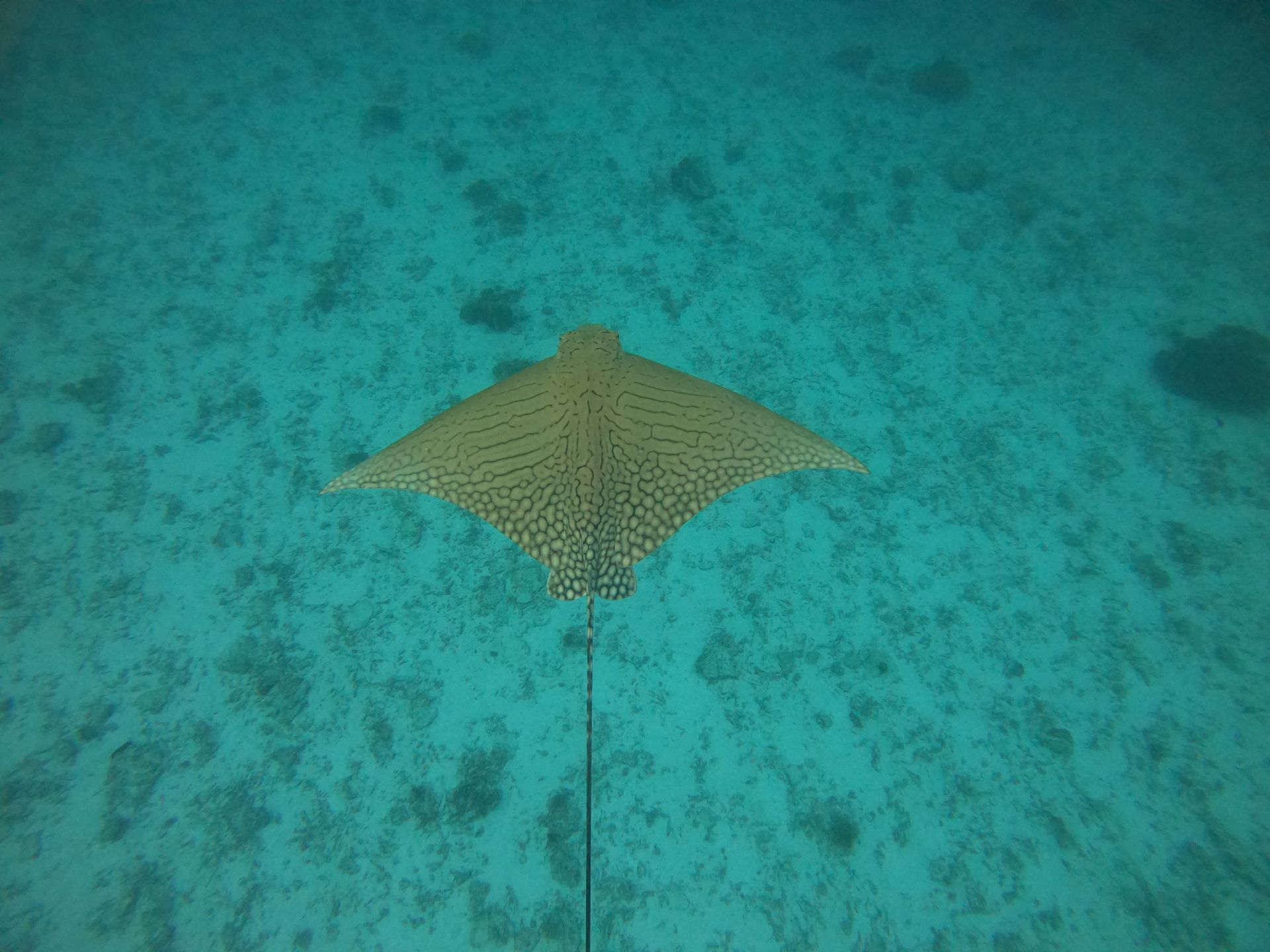Media Releases
Social media provides clues to rays

Social media users have helped scientists pinpoint the global range and habitats of a rare and spectacular stingray.
James Cook University’s Dr Andrew Chin was part of a team with scientists from Universiti Malaysia Sabah and the Large Marine Vertebrates Research Institute Philippines who were studying the ornate eagle ray (Aetomylaeus vespertilio).
He said scientists did not have a lot of data on the ray and its patchy distribution across the Indo‐West Pacific region.
“We decided to mine the data available on social media and trawled through Facebook, Instagram, Twitter and YouTube postings made between February and March 2019 looking for videos or pictures of the animal,” said Dr Chin.
He said the scientists found 53 sightings of the eagle ray, including in areas it had not been seen before.
“The species was recorded for the first time in Palau, the Seychelles and South Africa, extending the global footprint of where it’s known to exist,” said Dr Chin.
He said the use of citizen science – using community observers to compile sightings of natural phenomena - is in its early stages with regards to shark and ray science. However, eye-catching species like the ornate eagle ray are particularly good subjects for citizen science, especially for people who spend a lot of time in the water like reef guides.
Jacinta Shackleton, a reef guide at Lady Elliot Island in the southern Great Barrier Reef, has contributed her photos to the research effort.
“Given the massive use of social media worldwide and the global growth in diving, reef guides have great potential to document rare species like the ornate eagle ray that are otherwise almost impossible to find,” Ms Shackleton said.
“Spotting these rare species and contributing to science is also exciting for our guests as they know that they’ve just seen something other people rarely see,” she said.
In scientific terms, the study also showed that the species may benefit from protected areas.
“Of the locations examined in this study the majority of live reports of the ray, 88 per cent, occurred within protected areas or areas where there are special conservation measures for sharks and rays,” said Dr Chin.
He said the ornate eagle ray is classified as endangered, with its estimated population declining more than 50 per cent in the last 45 years.
“The need for information on this species is acute, given the existing signs of decline.
“What citizen science does in a case like this is indicate species ‘hot spots’, which researchers can then zero in on with serious technology such as acoustic tagging and satellite telemetry to get a definitive picture of where these animals go and how they use different habitats,” said Dr Chin.
Citizen science has been used to research previous projects including identifying hotspots for porcupine rays, which has led to further studies on these species.
“The same thing may happen here,” Dr Chin said. “We’re in discussions with reef guides at Lady Elliot Island about keeping a specific look out for these animals and the potential for a joint tagging project in the future.”
The animals could also be a drawcard for tourists to the southern Great Barrier Reef. “We’re very lucky that this may be one of the few places where this beautiful and rare animal can still occasionally be seen,” Ms Shackleton said, “We don’t see them all the time, but when we do, it’s something you’ll never forget.”
Link to video and images. Please credit Jacinta Shackleton, Lady Elliot Island. Images and video are for use with this release only. They are not available for re-use, re-sale or archiving.
Dr Andrew Chin
P: 07 4781 4486
E: Andrew.chin@jcu.edu.au